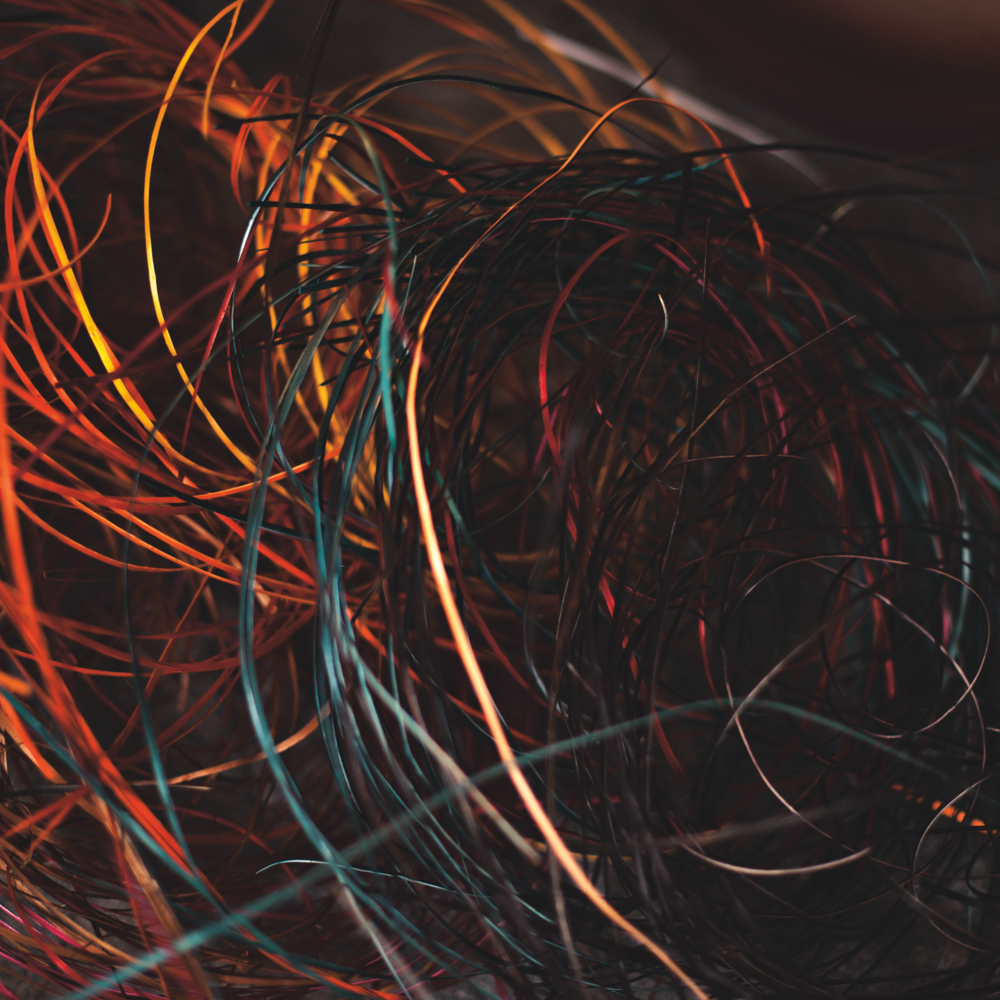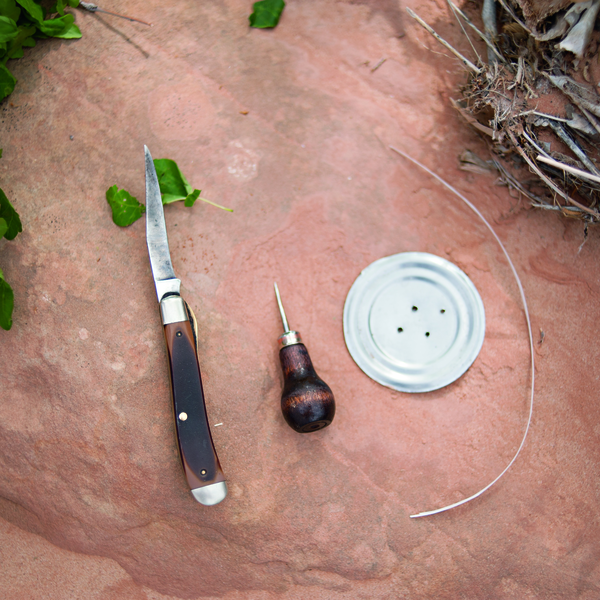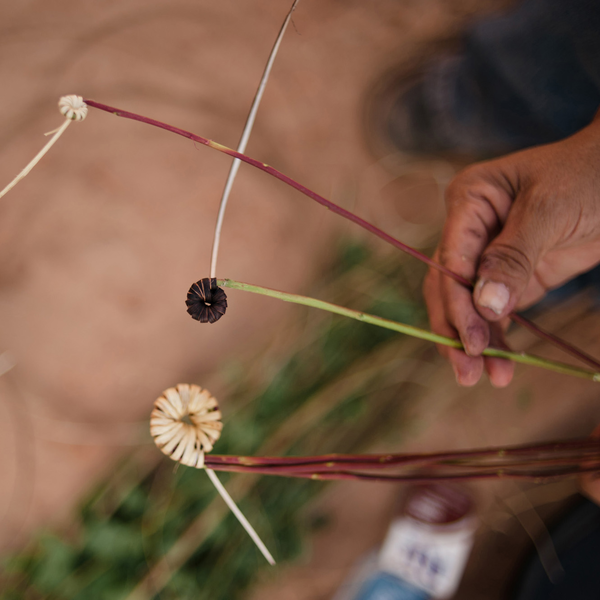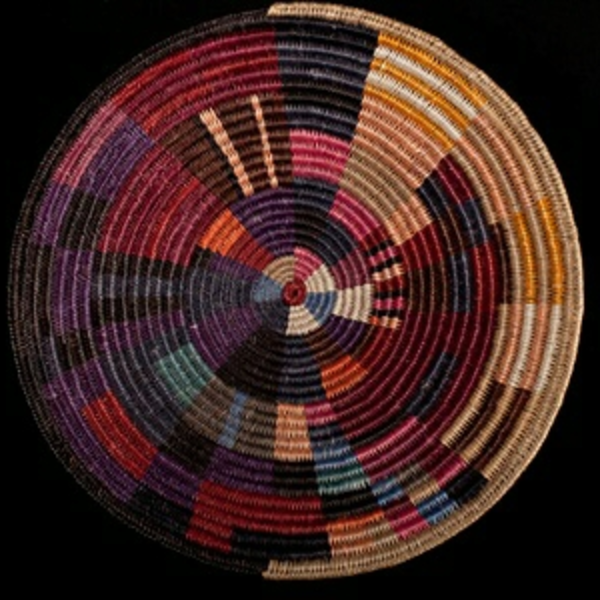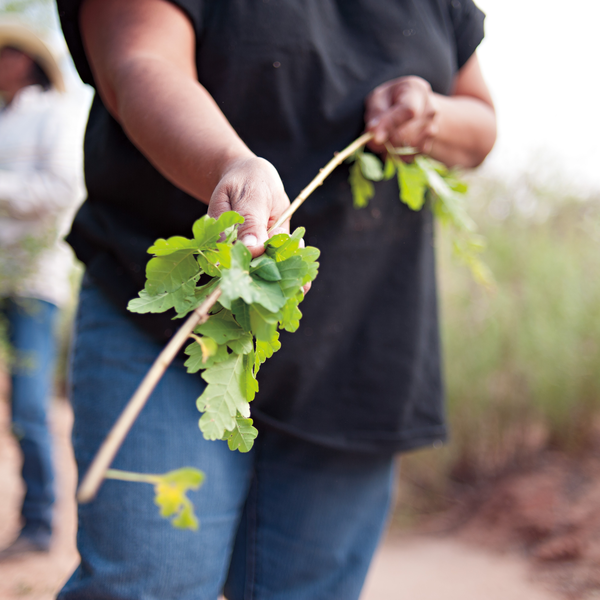Dyes
Contemporary Diné (Navajo) weavers use chemical dyes to create the vivid colors in their baskets. Before these dyes were available, weavers produced dyes from natural materials. For example, they made black dyes from charcoal and orange and yellow dyes from minerals like ochre. Mountain mahogany and yucca roots created rich reds and rust colors, while bark from sumac and walnut offered a warm brown. Sometimes weavers painted dye onto the surface of a finished basket. Other times, they soaked and boiled their basket materials in the dyes. Chemical dyes offer contemporary weavers many advantages. They are less time and labor intensive to use than natural dyes, so weavers can dye large volumes of sumac. This enables them to weave large baskets and baskets with multiple colors. Chemical dyes also provide a much broader palette of colors, including pinks, light blues, purples, and oranges, in addition to vivid reds and stark black.
